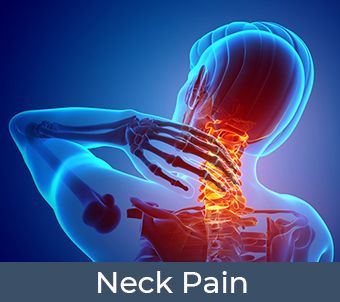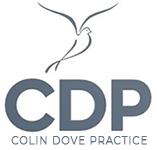What we Treat

- Keeping active can help with most back pain and will keep backs healthy. Prolonged bed rest is usually not good for backs and delays recovery.
- When lifting and carrying always keep the item close to the body. Make sure to bend the knees and let the legs do the work. Try not to twist the back – turn with your feet.
- Take regular exercise (aim for 30 minutes every day). People who are physically fit generally experience less back pain and recover faster if they do get it.
- Pace yourself when undertaking any physical activity, especially when it is intensive or you are unaccustomed to it e.g. spring cleaning or tidying the garden after the winter.
- Adjust your car seats, use a rolled-up towel to support the lower back and take regular breaks on long journeys.
- Mattresses and sofas wear out over time and can cause back pain. If you have one that is over seven years old it may be time to get a new one.

Shoulder Pain
Shoulder Pain is common and can be caused by a number of conditions, including:
- Rotator cuff problem
- Acromioclavicular joint pain
- Frozen shoulder or adhesive capsulitis
- Referred shoulder pain
- Osteoarthritis
- Shoulder instability
Hand and Elbow Pain
Pain occurring in the hand can sometimes be relieved by gentle manual treatment, depending on the cause. Osteoarthritis or wear and tear in the joints of the hand and the elbow may benefit from advice from an osteopath.
Elbow pain is often due to two main conditions commonly known as tennis elbow and golfer’s elbow. Tennis elbow causes pain and tenderness around the outside of the elbow joint, whereas golfer’s elbow causes pain around the inner side of the joint.
Hip Pain
There are a number of reasons for hip pain, such as a tight, strained or overused muscle in the hip causing conditions such as gluteal tendinopathy or from the joint itself. Pain in the hip can sometimes be the result of an injury, it can be referred from the back or related to the way a person moves, stands and/or uses the hip.
Pain from osteoarthritis or wear and tear in the hip joint is also common.
Knee Pain
The knee is the largest joint in the body. It is a major weight-bearing joint and is one of the most frequently injured joints in the human body. Knee pain can have a number of different causes, can be painful and debilitating and, although some conditions may require surgery, many can be helped with the right advice, exercise and treatment.
Foot and ankle pain
Pain can occur in the foot and ankles for a number of reasons. The foot and ankle are made up of a number of small bones interconnected by ligaments, muscles and fascia all working together to give strength, stability and flexibility the foot and ankle needs to function properly. Common conditions of the foot, ankle and areas which can give rise to pain include:
- Plantar fasciitis
- Achilles pain
- Sprained ankle
(Information taken from iO guidelines)

Neck pain is common in people of all ages. There can be a variety of reasons for this discomfort.
Working all day bent over a computer, driving long distances, poor posture while standing or sitting, stress and tiredness are all factors that can cause the muscles in the neck and upper back to become tight and the joints to become stiff, which can contribute to ongoing neck pain.
Sometimes a nerve in your neck can become irritated and cause pain in the arm going down into your shoulder or the hand, and may be accompanied by pins and needles and numbness. Some headaches can be the result of tension or stiffness in the neck and upper back.
Natural age-related wear and tear (osteoarthritis), does not necessarily lead to neck discomfort, however coupled with other factors, it can lead to muscular pain from the neck into the shoulder as well as some stiffness in moving the neck.
(Taken from iO guidelines)

Two of our osteopaths have post graduate qualifications in the treatment of sports injuries.
Roy Knightbridge gained an MSc in Osteopathic Sports Care, Sports & Exercise Science from Leeds Metropolitan University. He currently works on the European Golf Tour as part of the European Tour Performance Institute. Roy also has a keen interest in strength and conditioning. He has gained his Youth Strength & Conditioning award and is studying towards his UKSCA qualification.
Arabella Gaunt has a Sport & Exercise Science degree and an MSc in Sport & Exercise Medicine from Queen Mary. She currently runs the Sports Injury Clinic at the University College of Osteopathy (formerly the BSO).
Taking part in sport or keeping fit can be rewarding, improve your health and reduce your risk of serious illnesses, such as heart problems, stroke or cancer. It can also help maintain your weight and improve your self-esteem. Adults between the ages of 19 – 64 are advised to do at least 150 minutes of moderate-intensity aerobic activity per week. This can include activities like brisk walking, cycling or aqua aerobics. It is also recommended to perform exercises to strengthen all the main muscle groups (arms, legs and body) twice a week.
Even if you are active regularly, you should also aim to minimise the amount of time you spend sitting for extended periods. Sport has become a way of life for many in the UK, with participants ranging from elite athletes to those who just want to keep fit. But what happens if you get an injury?
Participating in sports too often or too hard may result in an injury. Failing to warm up properly beforehand, or warm down and stretch after exercise may also result in strains. Using inappropriate equipment or wearing the wrong footwear may likewise, hinder your performance. An unresolved injury, which might not even be related to sport, can make it difficult to even get started.
How can your osteopath help?
It is common to feel some minor discomfort after training, as the body takes a little time to recover and adapt to the demands of activities. Soreness often quickly resolves itself but occasionally, may persist for more than a few days or make it difficult for you to continue your normal activities. In these instances, you may want to seek advice from an osteopath.
Osteopathic care is based on the individual needs of the patient and so varies depending on age, fitness levels and diagnosis. Osteopaths use a wide range of gentle hands-on techniques, focusing on releasing tension, stretching muscles and mobilising joints. These are often used with exercise and helpful advice, together with strapping or taping, all of which are designed to relieve pain, help return to normal activity levels and maintain the best of health. As well as treating injuries, osteopaths may offer advice about optimal nutrition or suggest a sport-specific diet.
The good news is that although sports injuries are common, those who are active and have experience of following exercise routines may find they recover more quickly and easily from their injuries.
OSTEOPATHY FOR CHILDREN
The Colin Dove Practice has a long history of treating children of all ages. We receive specific referrals from other practitioners who treat children such as GPs, physiotherapists, speech and language therapists, occupational therapists, midwives and health visitors.
We treat many babies and children using gentle osteopathic techniques and several of our osteopaths have completed postgraduate courses in paediatric osteopathy and are members of the faculty and Alumni of the Foundation for Paediatric Osteopathy.
